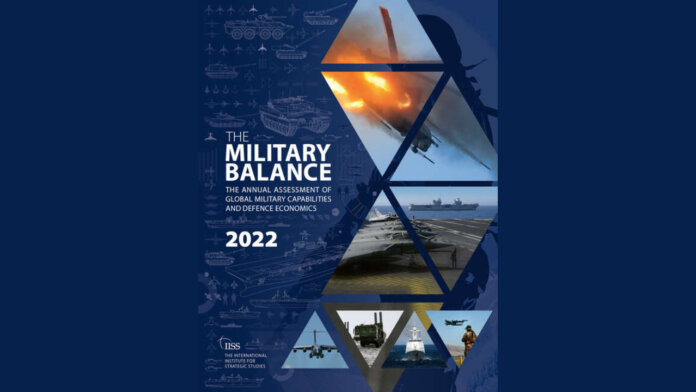On 15 February, The International Institute for Strategic Studies (IISS) launched the 2022 edition of The Military Balance, in a year that is characterised by significant risk of large-scale military conflict.
As Russian military forces continued their encirclement of Ukraine, IISS director general John Chipman said: “Russia’s build-up has so far been slow and methodical, with much of it visible to a global audience. Moscow will likely intend any military strike to be fast. However, one risk for Moscow – depending on the path of any attack – relates to the level of resistance from Ukraine’s armed forces and a population already resentful of Russia’s actions in Crimea and in Ukraine’s eastern regions since 2014. Reported movements by elements of Russia’s National Guard are noteworthy as these are units tasked with internal security duties.”
“It is unlikely that Russia has yet assembled the forces necessary to invade, subdue and occupy the entire country successfully, even if this were Moscow’s objective. That said, Moscow has a wide range of tools at its disposal. These include grey zone capacities, including in cyberspace. However, should Russia decide to attack there is probably enough combat mass now present to conduct a more limited ground operation, perhaps to seize Ukraine’s eastern regions, or to conduct stand-off strikes across the country using precision missiles, or a combination of the two. Such missiles, launched from well-within Russian territory, could also be employed along with ground manoeuvre forces as part of an integrated air-ground campaign.”
However, the IISS panel conceded that Russia’s military is more capable than at any time since the end of the Soviet Union. It has learned a lot from its successful military deployments to Syria. The air force is equipped with modern multi-role combat aircraft including the Sukhoi Su-34 equipped with expanded weapons and reconnaissance pods. Although Russia’s defence budget was increased in 2021, the IISS pointed out that if fell by 1.9 percent in real terms due to 5.9 percent inflation.
The question was raised that if Russia withdraws its forces from Ukraine’s borders, what would it have achieved?
Apart from the focus on possible action against Ukraine, Russia is the most significant player in the Arctic region. Most of its strategic maritime platforms including the bulk of its nuclear-powered ballistic missile submarines, are based at locations on the Kola Peninsula.
Russia has also been getting closer to China in Central Asia but the IISS does not expect this will lead to closer military co-operation.
Meanwhile, China is continuing its harassment of Republic of China (Taiwan), carrying out 230 incursions into the its ADIZ with more than 900 aircraft in 2021. What China termed as exercises involved fighter and bomber aircraft as well as electronic warfare (EW) and anti-submarine (ASW) aircraft, and more recently multi-role and transport helicopters as well as carrier-based fighter aircraft.
China accounts for 43 percent of total defence spending in Asia and is a leading provider of armed unmanned aerial vehicles (UAVs) such as the Chengdu Aircraft Industry Group Wing Loong. It is also developing hypersonic weapons as are Russia, the United States and France. According to the IISS, the UK is playing catch up.
The latest edition of The Military Balance also highlighted the unresolved conflicts in Africa and the Middle East while acknowledging that following Joseph Biden’s election, trans-Atlantic relations have yet to improve.
by David Oliver














